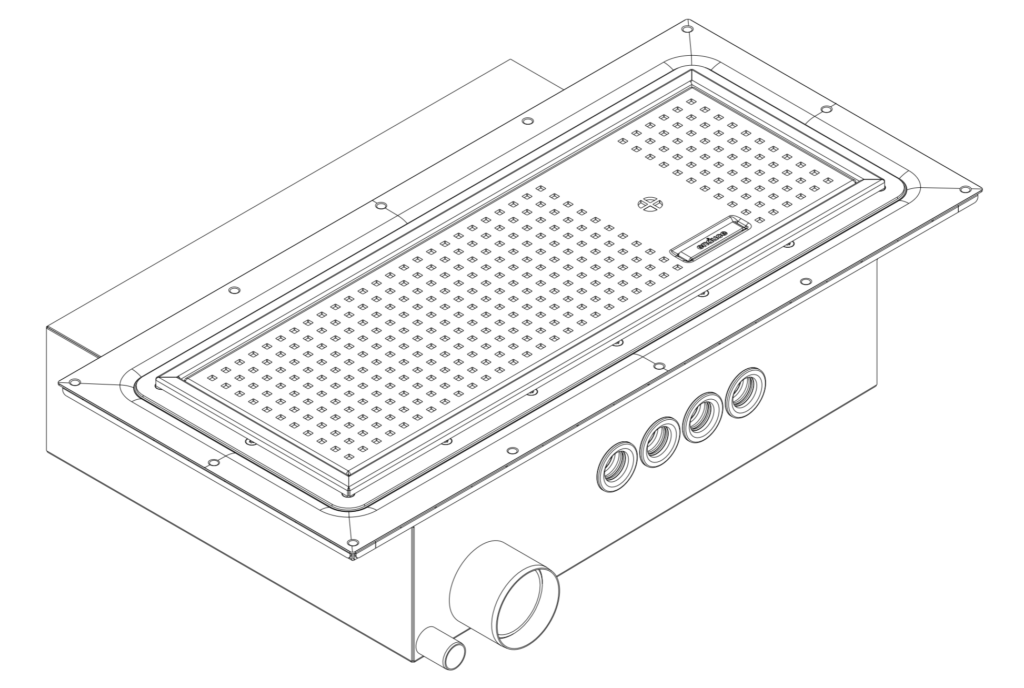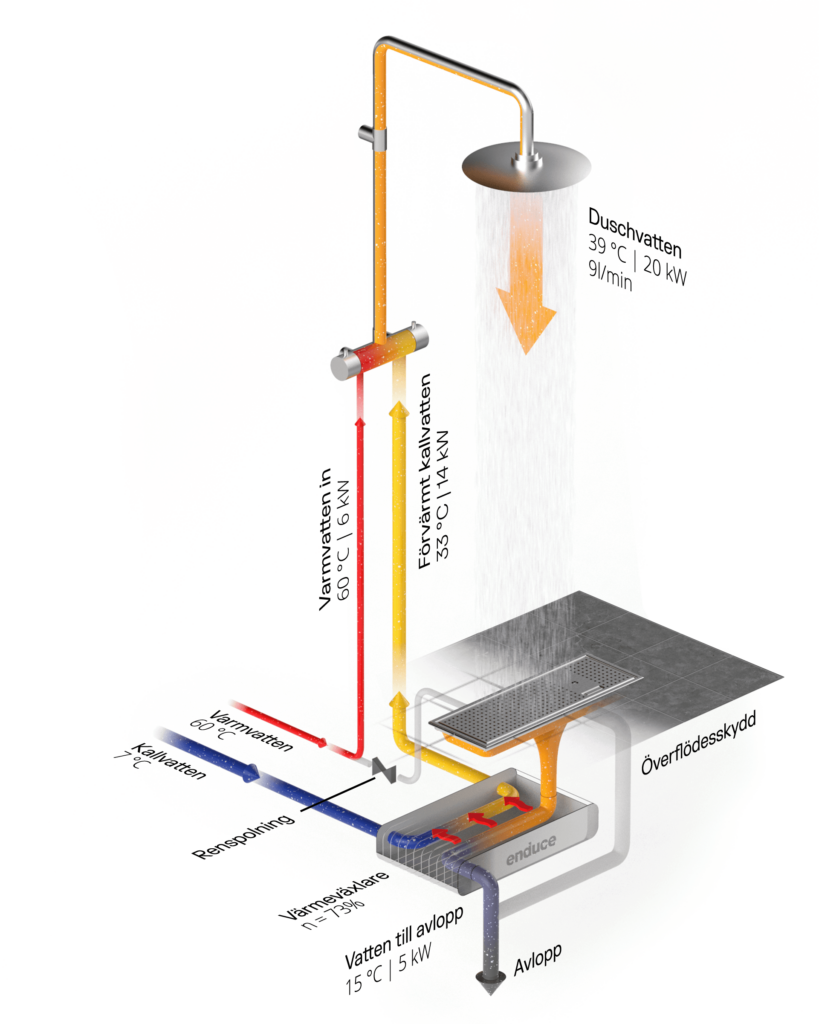Product information
Brochure
Product presentation of Enduce E1
Product data sheet
Technical specification and product characteristics.
Instructions
Instructions for use
How to use Enduce E1.
Care instructions - short version
See the User Manual for more detailed information.
Assembly instructions
For installation in joists and internal mounting.
Waterproofing instructions
Specific information for different types of waterproofing.
Assessments & analysis
EPD - Environmental Product Declaration
Declaration of the environmental and climate impact of the product.
eBVD - Construction product declaration
Detailed information on the content and environmental characteristics of the product.
LCA - Life Cycle Assessment
Detailed analysis on the environmental and climate impact of the product.
Construction products assessment
Published on the Construction Products Assessment website.
Reports and certificates
Type approval
Enduce E1, C901108 (RISE 2025)
Waterproofing certificate
Enduce E1 / APEX, C901073 (RISE 2025)
Efficiency test report
Heat exchanger efficiency (RISE 2022)
Project support
BIM object - MagiCAD
For downloading and designing in CAD
Energy calculation - TMF Energy
Available via license at TMF/RISE
Energy calculation - IDA ICE
Available in fall 2025.
The RSK database
Product information via RSK
Dimensional sketch
Drawing with dimensions and connections
Strength calculation (Afry 2023)
For installation in concrete floors
Template for program document
Helps you to prescribe Enduce E1
Are you missing something?

079-103 56 56
How to install Enduce E1
The Enduce E1 is robust and operates passively, without pumps, sensors or electronics. The product is installed in the floor joists in line with industry rules and standards. The main difference between a standard floor drain is that tap water is connected to the floor drain, partly to allow the heat from used shower water to be supplied (preheat) the cold water to the mixer, and partly to operate the integrated cleaning system that prevents clogging of the heat recovery system. Clear installation instructions are available for download - reviewed and accepted by Safe Water.
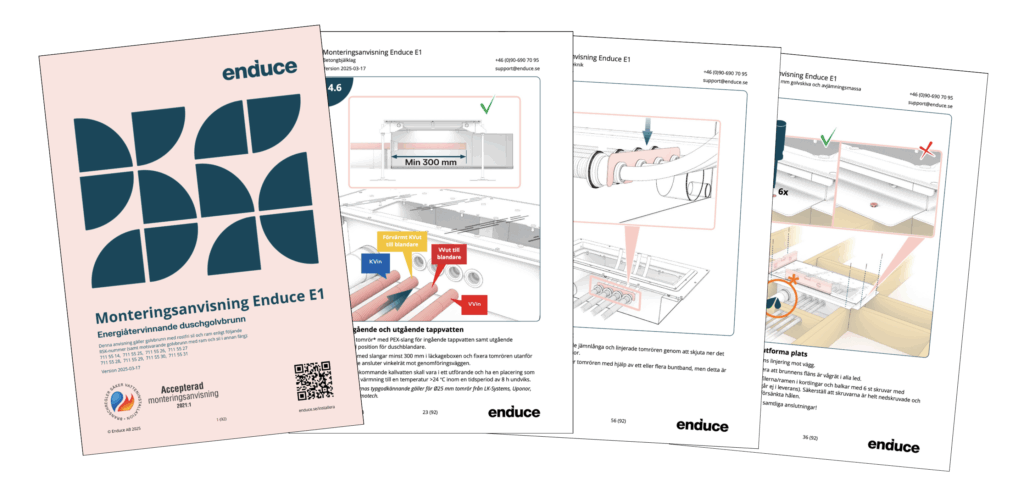
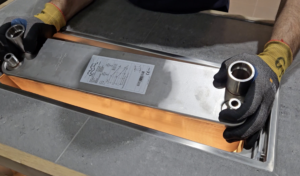
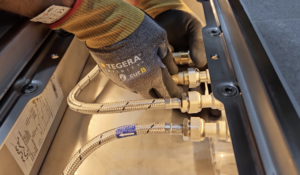

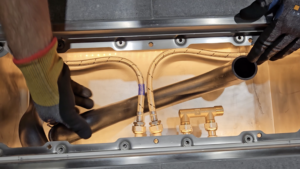

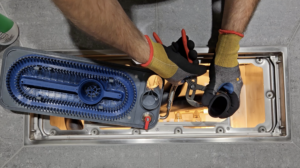
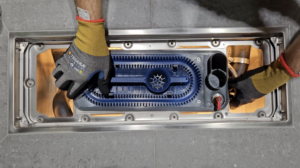

How Enduce E1 works
The Enduce floor drain recovers heat from the shower water through a highly efficient heat exchanger integrated directly into the shower floor drain. As used shower water flows through the heat exchanger, the heat is transferred to the incoming cold water of the shower, which is preheated. This means that significantly less hot water needs to be added when showering, reducing energy and hot water consumption by up to three quarters.
